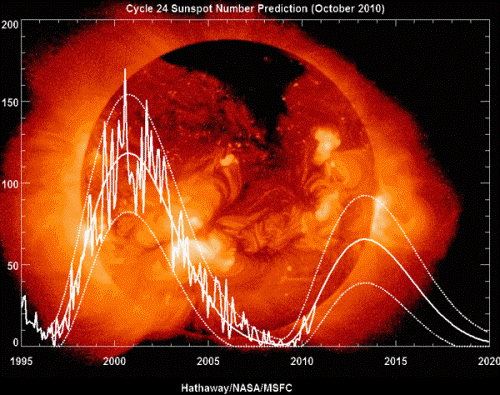Coming up on New Year’s Eve, earthlings tend to celebrate milestones of the year passed, as well as look expectantly toward the future. Here, Planetsave brings you some of the best space coverage of 2014 in various media.
The overall winner has to be the six-minute ultra-high definition timelapse video, with custom soundtrack, compiled by European Space Agency astronaut Alexander Gerst. In this breathtaking odyssey, Gerst compiled 12,500 images taken during his International Space Station tour of duty this year: auroras, sunrises, clouds, lightning, oceans, stars, the space station itself, Earth’s cities at night, and the fragile skin of atmosphere protecting life on the planet, all from 200 miles in space.
 Dr. Gerst described it on Google+ from his personal standpoint: “A 4K timelapse showing our planet in motion, from my favourite Earth images taken during the Blue Dot mission.” A geophysicist and a volcanologist, Alex Gerst (right) was the third German astronaut on the ISS. You can find out more about his mission here, and follow him on twitter @Astro_Alex.
Dr. Gerst described it on Google+ from his personal standpoint: “A 4K timelapse showing our planet in motion, from my favourite Earth images taken during the Blue Dot mission.” A geophysicist and a volcanologist, Alex Gerst (right) was the third German astronaut on the ISS. You can find out more about his mission here, and follow him on twitter @Astro_Alex.
Phil Plait, the astronomer, public speaker, and science evangelist who writes Slate’s fascinating Bad Astronomy blog, likes Gerst’s video a lot, too. Plait blogged some educated comments yesterday about the footage.
“I love the sequence of the Dragon capsule being manipulated by the CANADARM 2 at 1:30. At 3:00 city lights like stars in space stream below, and then it cuts to the Milky Way above, like a poetic mirror of the cities….”
He also points out a distant satellite bisecting the sky at 3:36 and explains the rocket science (orbital mechanics) behind the 4:50 sequence showing the ISS robotic arm maneuvering the Cygnus resupply ship Janice Voss and the ship’s departure for reentry destruction in Earth’s atmosphere. Plait also recommends two other “astonishing” time-lapse space vids released this week.
Yesterday, BBC News put out a 12-slide show that represents “the most stunning space pictures of 2014, including the Curiosity Mars Rover’s robot-arm selfie at Windjana Drilling Site in Gale Crater and Comet 67P/Churyumov-Gerasimenko (ten years distant from Earth), as seen from the European Union’s Rosetta spacecraft that gathered data and launched the brave, brief Philae lander.
Not to be outdone, this morning the Huffington Post released its “29 Most Spectacular Space Photos Of 2014.” Both collections feature the Rosetta comet closeup, but HuffPo’s shows colorful astronomical miracles, whereas BBC’s concentrates on a closer and more human-centered range of images.
In the just-released January-February issue of The Atlantic, writer Charles Fishman (also author of The Big Thirst: The Secret Life and Turbulent Future of Water, and New York Times-Wall Street Journal-Business Week bestseller The Wal-Mart Effect) chronicles life aboard the International Space Station in fascinating detail with “5,200 Days in Space.”
Unfortunately, Fishman mainly interviews and quotes Americans: his perspective is decidedly national—unlike human experience living in and exploring space, which has included some invaluable “firsts” by other nations (!). Fishman does capture ephemera and a few universal moments nicely, however:
“When humans move to space, we are the aliens, the extraterrestrials. And so, living in space, the oddness never quite goes away….”
Finally, NASA itself lets fly with six and a half minutes of video of “2014: What Happened This Year at NASA.”
It starts out with a little shock as you hear Neil Armstrong’s voice intone, “That’s one small step…”—before it segues into the 45th anniversary of the first moon mission and then to events of year 2014. These include not only strictly American triumphs, but also a worldwide Earth Day celebration and NASA’s partnerships in the International Space Station, with the European Space Agency, and with commercial ventures like SpaceX and Orbital Sciences Corporation.
“In 2014, NASA took significant steps on the agency’s journey to Mars—testing cutting-edge technologies [such as 3D printing] and making scientific discoveries while studying our changing Earth and the infinite universe…. 2015 promises to be an exciting year for NASA.”
During the next five years, asteroid landing and redirection exercises are planned. More Mars exploration will also follow, including a 2020 Rover mission to focus on the habitability of Mars for humans. And don’t look now—but NASA’s Langley Research Center in Hampton, Virginia, is already doing a feasibility study about floating a lighter-than-air rocket ship for a month-long HAVOC mission (and perhaps later, a colony) 30 miles up from the broiling, acid surface of Venus….

